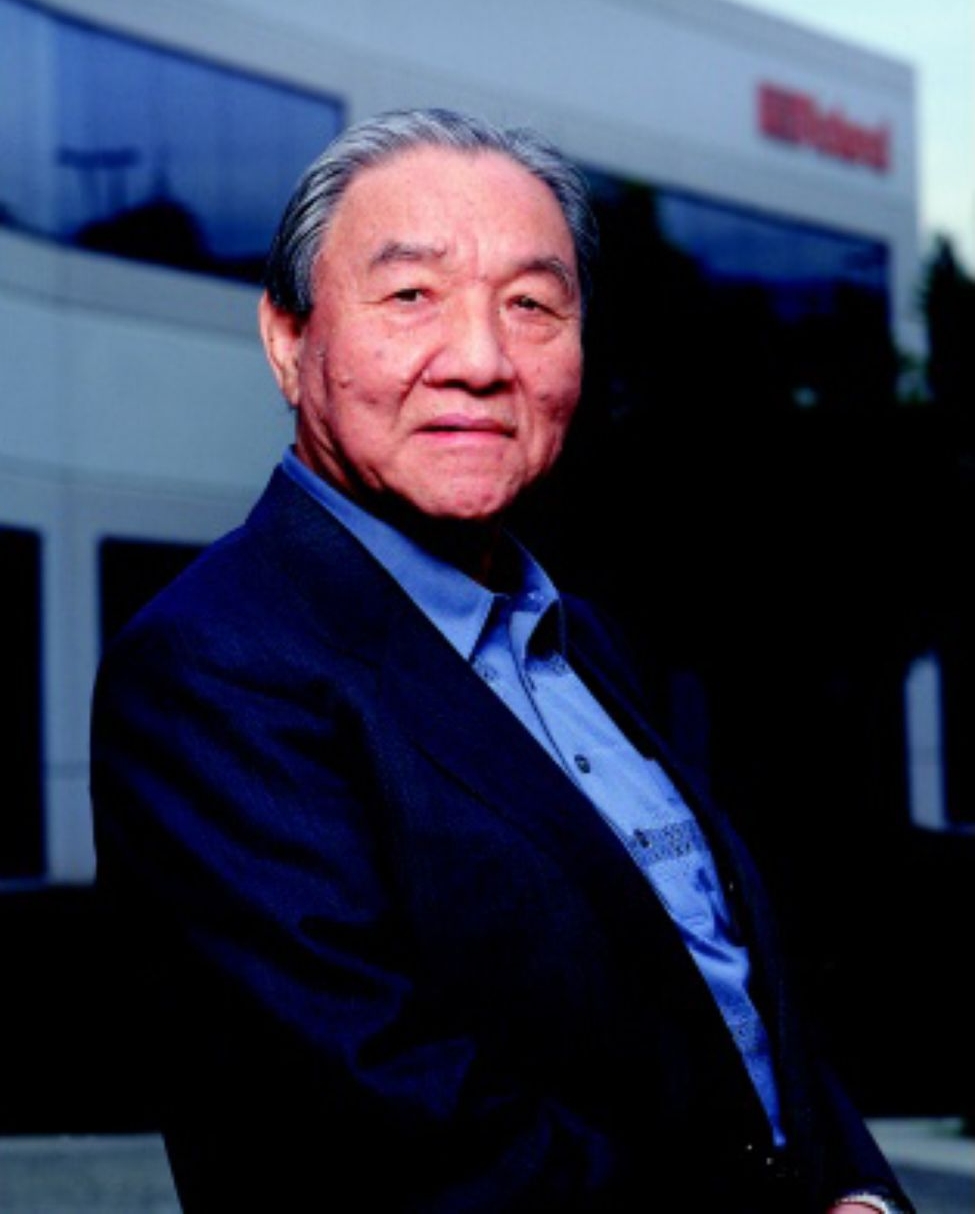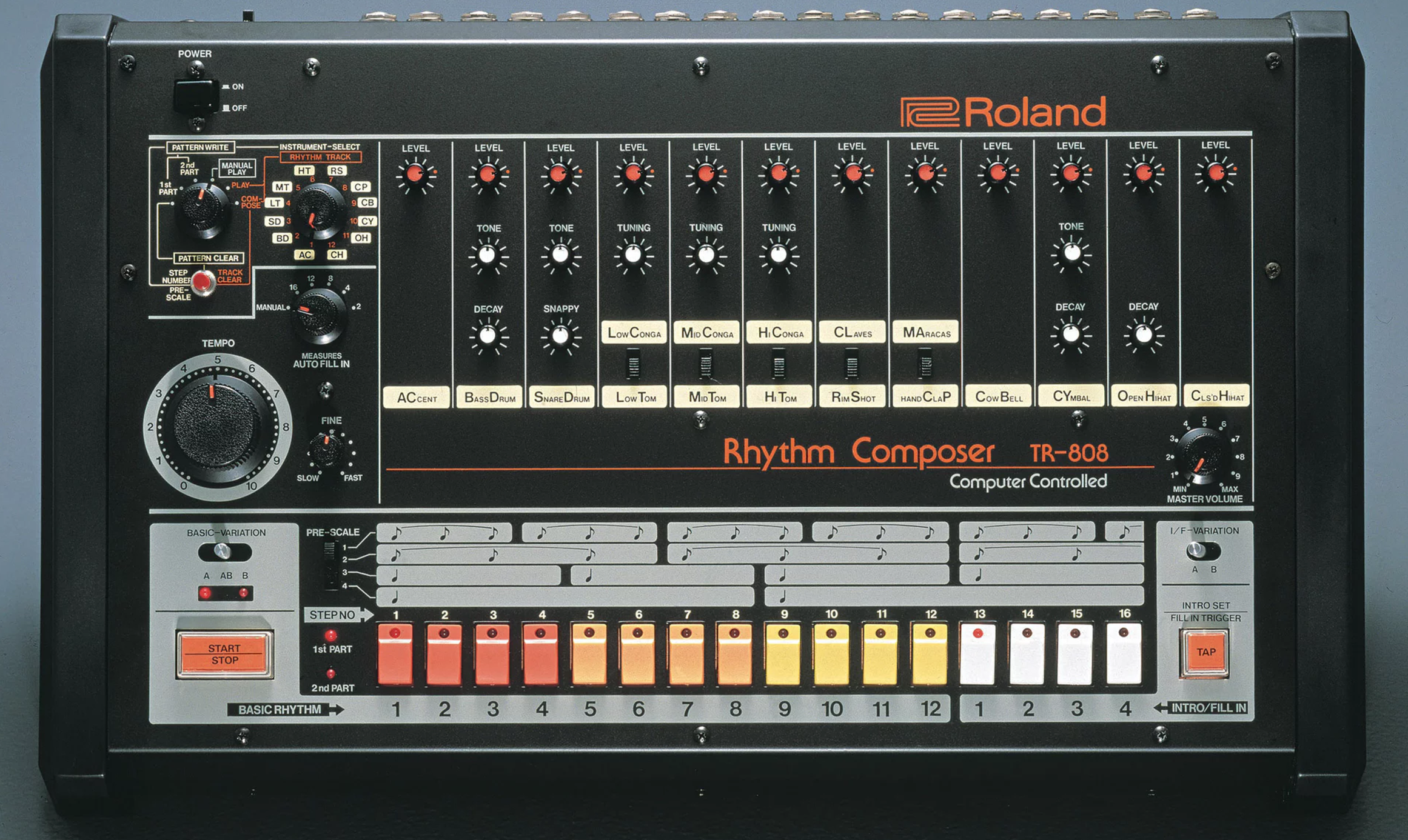Ikutaro Kakehashi (1930-2017) and the future of MIDI
By Will MacNamara
Kakehashi at the 1964 NAMM show with rhythm machines from Ace Electronics, the forerunner to Roland Corp.

Ikutaro Kakehashi did as much as anyone to invent electronic music as we know it today. The compulsive innovator was coming up with new ideas until his death this year at age 87. In his final years he was seen at the Musikmesse trade show — frail but with a full schedule — promoting ATV, his last startup.
Kakehashi was the founder of Roland Corporation, the Japanese synthesizer giant that he reportedly named after consulting a US phone book for a word that sounded good in multiple languages. The self-taught engineer spent the 1960s developing electronic organs and rhythm machines. Roland was the vehicle that would take his creations global.
Running Roland from its foundation in 1972 until 2001, Kakehashi either invented or oversaw the invention of many iconic devices of early electronic music: the TR-808 drum machine, the VP-30 vocoder, the System 700 analogue modular synthesizer, the JC-120 Jazz Chorus guitar amp, and a long line of classic keyboard synthesizers. Now museum pieces, these products generated new, more powerful models — from Roland Corp and many competitors — from the day they were launched.
His most enduring legacy, however, is not one product — not even the legendary TR-808. Rather, it is the invisible, almost magical lifeblood of electronic music: MIDI. Now running on over a billion devices, the Musical Instrument Digital Interface (MIDI) allows music to be represented as data and vice versa, so that all hardware and software instruments can communicate. Kakehashi developed a precursor to MIDI for some of Roland’s instruments. He was the first to propose a universal communications protocol for electronic music, which was not in the mainstream until MIDI launched in 1982. He shares credit with Dave Smith for the invention of the protocol.

Kakehashi lived long enough to see MIDI become an antique — a hardy, functioning antique like Roland’s first drum machines. The strength of MIDI has been to remain exactly the same. Its unusual resistance to change has made it very easy for operating systems and hardware to support it.
In the late 1990s, however, the limits of MIDI started to show. Hardware and software instruments were capable of higher-definition sounds, new modes of expressivity and new ways to connect to each other. But there was no MIDI 2.0 to facilitate a wholesale upgrade of the electronic music experience. In 2002 Matt Wright created an entirely new, open-source protocol for high-definition instruments. The Open Sound Control (OSC) specification was seen as a potential alternative to MIDI. However, no electronic instrument manufacturers (including Roland) committed to implementing it, and OSC remained a software-only protocol. Launched by two serial innovators, MIDI had seemingly become too entrenched to modernize — a variant of the “Innovator’s Dilemma.”

Kakehashi’s death comes at a time when MIDI is changing more than it has in 35 years. The shift started in 2015 when a group of hardware manufacturers and software developers — including ROLI, Moog, Keith McMillen, Logic, and Bitwig — met informally at the NAMM show. All of the companies were working in different ways on Multidimensional Polyphonic Expression (MPE), as the initiative came to be called. They discussed ways to enhance MIDI so that it could accommodate new modes of expressivity in hardware instruments like the Seaboard and the Linnstrument and software instruments like Bitwig Studio. After a few months they sketched out specifications for MIDI functions that would enable MPE to be adopted by any manufacturer and developer — and ultimately by any music maker.
The MPE specification is a set of rules agreed by hardware and software makers so that their products can communicate. It does not require a change to MIDI itself. In this sense it is a testament to the resilience of the protocol that Kakehashi and Smith created decades ago.
Kakehashi envisioned a world of interconnected, expressive electronic instruments when he pushed for MIDI in the early 1980s. He could not possibly have foreseen the scale on which his dream would become a reality — but he did live to see it happen. MIDI will need to change far more to allow the powerful and complex interactions that fully exploit the capabilities of modern music technology. MPE is just the beginning of an effort to create an even more interconnected world of even more expressive instruments — and to prolong Taro Kakehashi’s vision.
Join the ROLI community